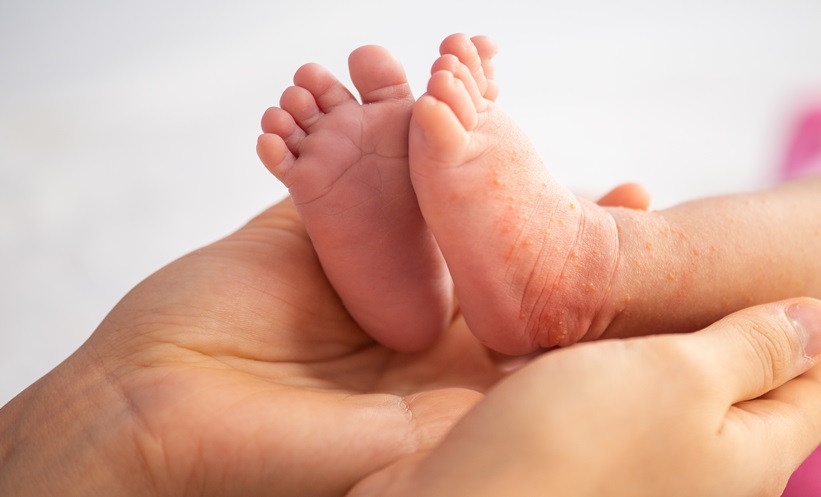THE EUROPEAN Academy of Dermatology and Venereology (EADV) 2021 Virtual Congress successfully brought together influential clinicians and academics from across the globe, working to achieve the EADV’s aims of “improving the quality of patient care, furthering knowledge and education of dermatologists and venereologists globally through innovation, and advocating on behalf of the speciality and patients.” Rather than viewing the online conference as an obligation, born out of necessity during the COVID-19 pandemic, the EADV instead transformed it into an opportunity. This was underscored by Alexander Stratigos, President of the EADV, during the welcome address: “As we move toward a post-pandemic era, our Academy is emerging ever stronger, with a vibrant day-to-day education programme that exploits the unique opportunities presented by digital learning.” Stratigos added: “Through our evolving digital learning ecosystem, we are able to deliver a multitude of online experiences, including webinars, enhanced digital communications, e-learning, and web-based tools to support continuous medical education and allow a broader diffusion of knowledge.”
The EADV’s 30th Anniversary Congress was notable for its Opening Plenary lectures. Margaritis Schinas, Vice President of the European Commission, provided his perspectives on Europe after the pandemic. In addition, Chris Griffiths, Foundation Professor of Dermatology at the University of Manchester, UK, delivered a talk entitled ‘The Future of Dermatology’. The special Anniversary Edition also featured an important patient-focused session, which addressed the physical and emotional pain of skin disorders and considered what else dermatologists and venereologists can do in their daily practice, beyond proper medical treatments. Patient perspectives and expert opinions on incorporating novel solutions such as music and virtual reality into care practices were explored.
With over 550 prominent speakers, 10 plenary lectures, and 160 ‘simulive’ sessions, participants were granted access to 4-days’ worth of outstanding content. Presentation topics spanned across the discipline and included anti-fibrotic therapy for scleroderma, the classification of COVID-19-associated skin manifestations, the microbiome and its relevance in wound healing, the impact of pregnancy on autoimmune and inflammatory skin diseases, conventional and novel treatment modalities in rosacea, and the pathophysiology of atopic dermatitis. Keynote speakers at the 30th EADV Congress included Richard L. Gallo, distinguished Professor and founding Chairman of Dermatology, University of California, San Diego, California, USA, who spoke about emerging priorities for microbiome research, and Marta Szell, Head of Department of Medical Genetics at the Faculty of Medicine, University of Szeged, Hungary, who discussed the identification and functional characterisation of phenotype modifying genetic variants in CYLD cutaneous syndrome.
A multitude of abstracts were presented over the course of the meeting, providing insights across the various sub-disciplines of dermatology and venereology. Several standout abstracts have been summarised in this issue of EMJ Dermatology, covering highly relevant topics such as diagnostic and management challenges of erosive pustular dermatosis of the scalp; chronic urticaria and its clinical characteristics, epidemiology, and impact on the quality of life of patients; and a case report documenting overlapping drug reaction with eosinophilia and systematic symptoms and Stevens-Johnson syndrome.
An overview of hot-topic EADV press releases can also be found within these pages, including a safety analysis of biological therapies for psoriasis and reasons for COVID-19 vaccine hesitancy in patients with psoriasis, characteristic differences in chronic spontaneous urticaria in children and adults and its impact on management strategies, a link between genital warts and the immune system, and the shortcomings of direct-to-consumer skin cancer detection apps. Each groundbreaking news story featured in this publication was based on research presented during the EADV 2021 Congress.
EMJ looks forward to welcoming you all, hopefully in-person, to Milan, Italy, next year for the 2022 meeting for the premier dermato-venereology conference. Until then, read on for our key scientific insights from the EADV 2021 Congress.
Portable Photodynamic Therapy Device Brings Possibility for Home Treatment of Basal Cell Carcinoma
SIGNIFICANT reduction in pain and efficacy levels comparable to a hospital stay are in the profile of a prototype photodynamic therapy (PDT) device for treating basal cell carcinoma (BCC). PDT is supported by multiple studies efficacious in its ability to destroy cancerous cells, but drawbacks have always been the pain experienced during treatment and lengthy hospital stay. A novel home device offers an attractive alternative for affected patients.
Current practice consists of two sessions in a hospital environment, 1–2 hours apart, every second week. The researchers commented on how impractical this schedule is for patients. Ana Gabriela Salvio, lead researcher in the investigation from the São Carlos Institute of Physics (IFSC), Brazil, emphasised the demand for a portable device in a country like Brazil: “Many patients need to travel more than 300 km to receive specialised dermatological treatment.” She believes that “the global pandemic accelerated the need to develop this at-home treatment element, which has the potential to impact the treatment of BCC internationally.”
Fifteen patients participated in this pilot study at the Amaral Carvalho Hospital, São Paulo, Brazil, and the IFSC. The first PDT session was performed in hospital, applying a 20% methyl aminolevulinate cream to the BCC lesion, illuminated for 20 minutes with a commercial red light-emitting diode device. Immediately after this, a light layer of cream was applied and the new portable irradiation device fixed to the skin. This device is only the size of a coin and allowed patients to be sent home with instructions to turn on illumination after 1.5 hours and then off after 2 hours. Pain on a scale of severity from 1–10 was assessed every 3 minutes in hospital and self-reported every 20 minutes during home treatment, with median values compared between the treatment branches. Histological analysis revealed that at 30 days post-PDT clearance was 86.67%, similar to standard treatment, and pain was significantly lower in the treatment performed at home. These results suggest a more comfortable treatment with less pain is possible.
Obvious limitations exist in the small study size, apparent in this pilot study, but these will be addressed by the approved clinical trial with over 200 participants that will take place. The portable irradiation device under scrutiny in this pilot study is in the process of being patented in anticipation of the upcoming trial, which will certainly be followed closely by the oncology specialty. Salvio summarised the opportunities for this avenue of treatment: “Patients reporting much lower levels of pain from the at-home treatment is really encouraging, especially as it doesn’t come at the cost of efficacy … Our study results could have a hugely positive impact on the treatment of basal cell carcinoma in Brazil and the rest of the world.”
This information was taken from a press release, dated 1st October 2021, part of the 30th annual EADV Congress.
Skin Cancer Detection Apps Failing to Identify Life-Threatening Cancers
LIFE-THREATENING skin cancers are being missed by a direct-to-consumer machine-learning model. New research presented at the 30th EADV Congress has identified that the model incorrectly identified rare and aggressive cancers as low risk.
Researchers in London created a dataset of 116 images of a variety of skin conditions, including some images of two rare and particularly aggressive forms of cancer, Merkel cell carcinoma and amelanotic melanoma. The images were then assessed by a machine-learning models. Model 1 was a certified medical device, sold directly to consumers through an app store and advertised as being able to diagnose 95% of skin cancers.
Results of the investigation demonstrated that Model 1 incorrectly identified 17.9% of Merkel cell carcinomas and 22.9% of amelanotic melanomas as low risk. Conversely, 62.2% of benign lesions were classified as high risk. Model 1’s sensitivity was 79.4% and its specificity was 37.7%. The high false positive rate and number of missed malignancies of Model 1 pose a question about the safety of artificial intelligence diagnosis models that are available directly to consumers.
Technology such as Model 1, which is available without the transparency of accurate performance metrics for rare but potentially life-threatening skin cancers, poses both an ethical and a practical question about how these products are certified, marketed, and eventually utilised by the public.
“The number of skin cancer detection apps available for consumer use is growing, but as demonstrated in this research, there must be more transparency around the safety and efficacy of these apps,” stated Marie-Aleth Richard, EADV Board Member and Professor at the University Hospital of La Timone, Marseille, France. “Failure to be transparent could put lives at risk.”
Difference in Chronic Spontaneous Urticaria Presentation Between Children and Adults
PRACTICE-CHANGING research presented at the EADV Congress 2021 has articulated the differences in the presentation of chronic spontaneous urticaria (CSU) between children and adults. Urticaria is characterised by a raised itchy rash (commonly known as hives) and sometimes presents with angioedema. In CSU, there is no specific cause or trigger but hives are present for most days of the week for a period of 6 weeks or longer.
Findings of the recent research contradict the previously held belief that children were more likely to experience acute urticaria rather than chronic urticaria, and suggests that CSU is less severe in children than adults, with lower rates of angioedema and thyroid autoimmunity.
Researchers conducted a retrospective analysis of 755 patients with CSU, 171 children versus 580 adults. Data was compared to determine distinct characteristics between paediatric and adult patients with CSU. The data revealed a shorter disease duration, lower occurrence of angioedema (21.8% versus 59.8% [p<0.001]), and reduced incidence of thyroid autoimmunity (8.9% versus 25.4% [p<0.001]) in the paediatric group compared with the adult group. Furthermore, paediatric patients were found to respond more positively to antihistamines than adult patients did.
Results of the retrospective analysis further demonstrated that resistance to antihistamines was associated with anti-thyroid peroxidase positivity and the presence of angioedema and eosinopenia in the paediatric group whilst in the adult group the only identified association was eosinopenia.
“Our research is focused on identifying these differences [in CSU medical origins and co-existing diseases] to help inform future treatment of CSU and to provide more information on the effects of CSU on children, something which has previously been neglected in this field of research,” stated Professor Emek Kocaturk, Koc University Hospital, Istanbul, Turkey.
Biologic Treatments and COVID-19 Impact on Patients with Psoriasis
DATA presented at the EADV’s 30th Congress explores the safety analysis of biologics by reviewing real-world data on vaccine hesitancy and exploring the impact of the COVID-19 pandemic on patients with psoriasis. The opinions towards the COVID-19 biologic-treated patients with psoriasis and/or psoriatic arthritis were studied by researchers in Spain. The data was collated from social media in order to reduce the limits of conventional hospital surveys that could be affected by the presence of a healthcare professional.
Between January and March, 10,922 social media posts from patients in the USA, UK, France, Spain, and Germany were identified and further reduced to 624 posts, which were analysed to provide insight. According to the results, hesitation towards the COVID-19 vaccine was due to concerns of safety, the worsening of underlying conditions, the lack of clinical trial data, possible side effects, and the effects on patients with autoimmune conditions. Additionally, the patients did not have information on the interaction of the COVID-19 vaccine with biologic therapy and its effect on patients who are immuno-compromised. These results demonstrated the importance of education in order to tackle vaccine hesitancy.
According to research biological treatments for psoriasis are frequently linked to higher risk of infections. Another real-world study carried out by researchers from the Netherlands, including 714 patients with psoriasis with up to 1,325 treatment episodes from the BioCAPTURE registry, sought to understand if there were any associations between biological therapies and increased risk of respiratory tract infections (RTI) and serious infections, including COVID-19. There were 2,224 RTIs and 63 serious infections. However, only 1.3% RTIs were considered serious. Furthermore, there was no association for risk of serious infection and a distinctive risk of RTI between the biologic treatments for psoriasis etanercept, infliximab, ustekinumab, secukinumab, ixekizumab, and guselkumab.
“Our analysis reveals no differences in risk of respiratory tract infections between biologics, including the newer IL-17 and IL-23 inhibitors, in a prospective psoriasis patients’ cohort. In addition, our preliminary results suggest that biological treatments do not impact psoriasis patients’ susceptibility to COVID-19 infections, although this needs to be further investigated,” says Lara van der Schoot of the Department of Dermatology, Radboud University Medical Center, Nijmegen, the Netherlands, and lead author of the study. “These findings provide key clinical value and will help to guide patient decisions with regard to psoriasis treatment options and choice.”
Novel Study Shows the Prevalence of Skin Disease in Europe
SKIN conditions can severely impact the quality of life and mental health of individuals, with aggravating symptoms including itchiness, redness, and dry skin. Dermatological conditions include acne, psoriasis, eczema, and many more. The prevalence of these conditions is common, but exactly how common are they? A novel survey, Burden of Skin Disease in Europe, conducted by the EADV aimed to find out. The objectives and the outcomes of the study were shared during the 30th annual EADV Congress.
Interestingly, before this study took place, there was very little information about the prevalence of skin conditions in Europe across the general population. Additionally, there was no reliable data on the impact of skin diseases on the quality of life of patients. This new study aimed to change this, and their key objective was to find out the prevalence of dermatological conditions across Europe, as well as find out how accessible dermatologists are to the general population and understand the reasons why an individual might visit a dermatologist.
The study involved 44,689 participants over the age of 18, across 27 countries in Europe, including the UK, Switzerland, and Norway. Fascinating and valuable insights show that out of 21,401 participants in the general population, 47.9% reported to have at least one skin condition. Further to this, out of those affected, individuals reported to have a median of two skin conditions, with fungal skin infection being the most common and affecting 9.07% of participants. The survey also highlighted other common conditions that affected 1 in 20 people, this includes eczema, alopecia, and acne.
The EADV Board Member leading the survey, Marie-Aleth Richard, Professor at the University Hospital of La Timone, Marseille, France, shared her final thoughts: “The fact that one in two people across Europe live with skin disease on a daily basis makes the skin the most affected organ in the body and as an organisation we are therefore committed to making skin disease a public health priority.”
Newly Discovered Link Between Immune System and Genital Warts
GENITAL warts, also known as condyloma acuminata, is the most common sexually transmitted disease in the world. The condition presents itself as soft growths around the anus or genitals and is caused by the human papillomavirus (HPV). Over 80% of men and women who are sexually active are predicted to develop at least one HPV infection by 45 years old. An incredible breakthrough in HPV research was shared at the 30th EADV Congress that shows that there is a link between the immune system, specifically the human leukocyte antigen (HLA) system, and genital warts.
The study involved a large cohort of 65,791 participates who donated their blood. Out of this group, 4,199 participants had genital wart cases, the remaining participants were the control group. The genetic information of these individuals was assessed, particularly the HLA types and the link between genital warts.
Results from this unique study showed that there were 12 protective gene variations and 7 risk alleles in the cohort of patients. Participants who had risk alleles were less able to recognise the HPV virus and consequently were more likely to develop genital warts. On the other hand, those with protective alleles had a better immune response and were, therefore, able to recognise HPV effectively and were less likely to present with genital warts.
From these insightful findings, it can be determined that there is certainly a link between the HLA system and the development of genital warts. However, further research is needed to discover whether protective alleles can recognise specific HPV proteins. Mariano Suppa, EADV Board Member and Associate Professor at Université Libre de Bruxelles, Brussels, Belgium, shared her concluding remarks: “The promising results presented in this study are an exciting breakthrough, which could lead to potential avenues for future mRNA vaccinations against genital warts.”








